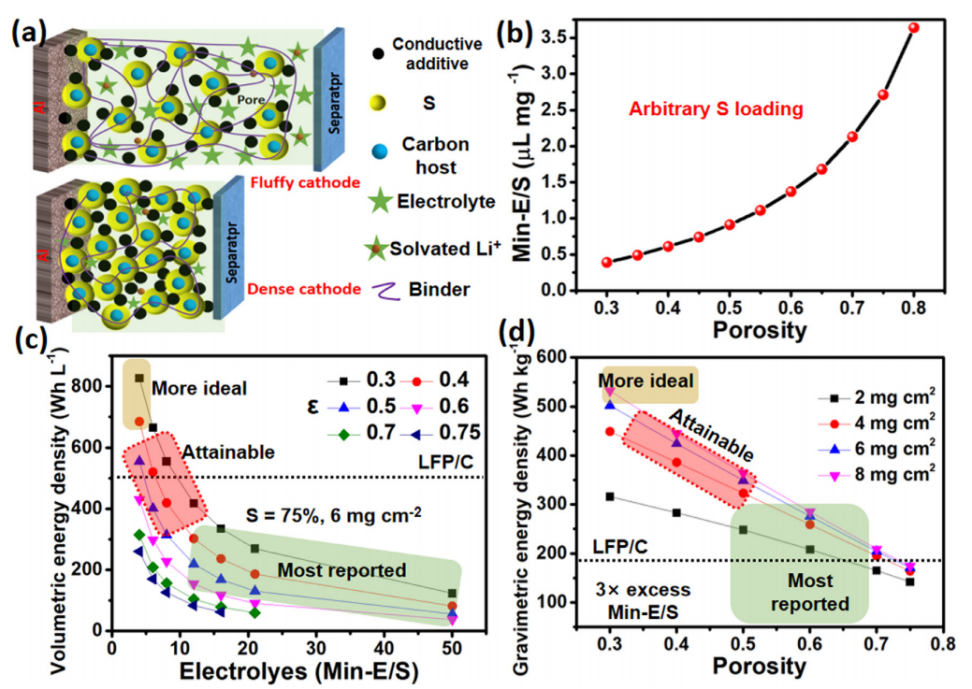
Recently, the research team led by Professor Xiao Zhubing from Henan Key Laboratory of Photovoltaic Materials made significant progress in high-performance lithium-sulfur batteries based on biochar. The paper entitled “A Cost-and Energy Density-Competitive Lithium-Sulfur Battery” was published in the internationally renowned academic journal Energy Storage Materials (impact foctor: 17.789).
Lithium-sulfur (Li-S) batteries as a emerging rechargeable lithium ion batteries have garnered intensive research interest. How to achieve high energy density and low cost Li-S batteries was widely concerned. The composite of sulfur and porous carbon as sulfur cathode can not only provide great electron/ion transport, but also inhibit the diffusion of soluble polysulfide (LiPS), which is considered as a kind of potential modification method. However, most of the carbon-sulfur composites themselves possess fluffy architectures with large internal porosity (ɛ, usually 0.5-0.7), which demand plenty of electrolytes to guarantee a satisfactory ionic conductivity. In addition, in order to achieve higher advantages than commercial lithium-ion batteries, the research team prepared Li-S batteries with both cost and energy density advantages, which not only have high gravimetric and volumetric energy densities of 400 Wh kg-1 and 400 Wh L-1, respectively, but also exhibit costs below $100 (kWh)-1. Based on these issues, the research team reports a class of bio-derived dense self-supporting cathode with ultralow porosity of 0.4 via self-densification effect during thermal drying without mechanical compression to realize a low-cost Li-S cell with high gravimetric/volumetric energy densities. Benefiting from the great preponderances of biochar, jointly high gravimetric/volumetric energy densities of 422 Wh kg-1/446 Wh L-1 are achieved under conditions of high mass loading (6.5 mg cm-2) and extremely lean electrolyte (2.5 L mg-1), the corresponding costs based on sub-Ah level pouch cells are estimated to be as low as $60 (kWh)-1-$90 (kWh)-1 for the initial 20 cycles via a materials-to-system analysis, which is visibly less than that of the typical commercial LIB ($100 (kWh)-1).
This work was financially supported by the financial support from National Natural Science Foundation of China, Hunan Provincial Natural Science Foundation of China, Research Foundation of Education Department of Hunan Province, Double first-class construction project of Hunan Agricultural University, the Scientific Research Foundation for “Special Support Program for Exceptional Talents” of Henan University and Key Scientific Research Projects of Higher Education in Henan Province. School of Chemistry and Materials Science of Hunan Agricultural University is the first unit for the paper and Henan Key Laboratory of Photovoltaic Materials of Henan University is the second unit. The first author of the paper is associate professor Mei’e Zhong. Professor Xiao Zhubing is the only corresponding author.
Article links: https://doi.org/10.1016/j.ensm.2021.06.037